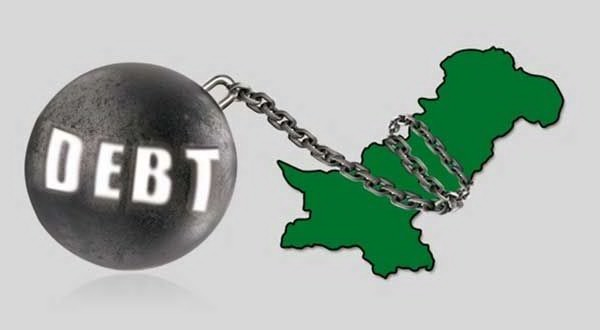Pakistan’s total debt and liabilities have surged by an alarming 26 percent, reaching a new record of Rs78 trillion in the past year, with Rs4.7 trillion attributed to liabilities, according to the State Bank of Pakistan (SBP).
The increase, totaling Rs16 trillion by the end of September, highlights an unsustainable trajectory that may necessitate debt restructuring in the longer term. The government’s accumulation of debt at a rate of 26 percent translates to an average of Rs44 billion per day since September of the previous year.
Austerity measures introduced by successive governments have failed to yield substantial benefits, with no meaningful reforms implemented to curb the accumulation of debt. Despite initial budgeting by the finance ministry for Rs7.3 trillion in interest payments alone for the current fiscal year, the government has informed the International Monetary Fund (IMF) that interest payments could soar to a staggering Rs8.5 trillion, reflecting a deviation of Rs1.2 trillion in just four months.
The cost of servicing the debt cannot be diminished until the central bank reduces the key policy rate and the government negotiates with commercial banks for a reduction. The gross public debt, falling under the direct responsibility of the finance ministry, totaled Rs64.5 trillion by the end of September, according to SBP data.
During the previous fiscal year, the federal budget deficit reached a record Rs6.7 trillion, attributed to expansionary fiscal policies. The surge in public debt exceeded the budget deficit, indicating the impact of currency devaluation. Over their respective five-year terms, political parties added significantly to public debt: PML-N added approximately Rs10 trillion, PPP Rs8 trillion, and PTI alone accumulated over Rs19 trillion.
The surge in public debt during the PTI’s tenure can be attributed to lower-than-targeted tax collection, steep currency devaluation, higher interest rates, increased expenditures, losses by state-owned companies, and mismanagement of debt.
Public Sector Enterprises’ debt and liabilities reached Rs2.33 trillion by the end of September, reflecting uncontrolled losses. No government has taken steps to reform state-owned enterprises, where political appointees often fill key positions.
The average exchange rate depreciated by 26.3 percent to Rs287.8 to a dollar within one year, significantly impacting the government’s external debt. External debt expanded by 26 percent to reach Rs33.4 trillion within a year, with a net increase of Rs6.9 trillion, primarily due to currency depreciation and foreign currency reserve building through borrowing.
Pakistan’s external debt and liabilities climbed to $128 billion by the end of September, an increase of $3.4 billion in the last three months. The country’s debt from the IMF grew by 31 percent to reach Rs2.3 trillion by the end of September, according to the SBP.
The federal government’s total domestic debt increased to Rs39.7 trillion, rising by Rs8.2 trillion (or 26pc) in the past year. In the July-September quarter alone, the country spent Rs2.2 trillion solely on servicing the total debt and liabilities—a figure that marked a 41.5 percent increase from the previous year. On interest payments alone, Pakistan disbursed Rs1.56 trillion in three months, reflecting a 58 percent surge compared to the same period of the preceding year.


























“Mismanagement of debt during PTI era…”
Author conveniently forgets a once in a lifetime pandemic, which increased debt & also fails to note that PTI’s net debt was still lower than any other of the previous 5 governments.
Please refrain from being slaves to uneducated & corrupt families.